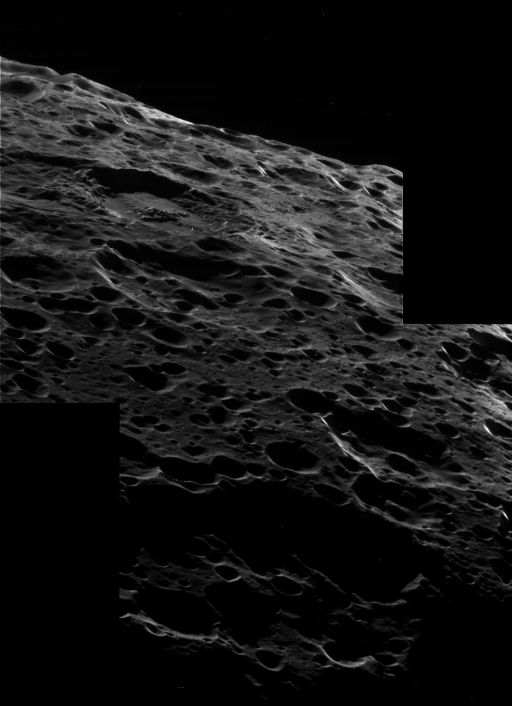Emily Lakdawalla • Sep 11, 2007
Iapetus, saturated with craters
Eight more images came down from the spacecraft this afternoon as part of a brief downlink opportunity not long after Cassini's closest approach to Iapetus. A lot more data than these eight images was planned to have been returned, but most of that was the RADAR team's synthetic aperture radar (SAR) swath on Iapetus. Radar isn't like camera data; it's no easy task to convert radar data into SAR images. So I have no idea if that swath was successful or when we'll see the first pictures from it; but I'm dying to see them!
Among the eight images were three captured through clear filters, taken while the UVIS spectrometer was performing observations of an area in Iapetus' northern hemisphere that marks the fuzzy boundary between the bright and dark terrains. Without any color information, it's not easy to be sure where the boundary is. I think it's a bit to the north (right) of this view; anyway you can see that several of the craters have one little segment of bright wall, the segment that faces to the right, and I think these are areas in the light-dark transition zone where pole-facing crater walls within the dark region are bright.
What's overwhelming about this mosaic, which was assembled by Ian Regan, is that there are craters, craters everywhere.
A first glance at Iapetus says that this surface is really, really, really old. Everywhere you look, there are craters. Every crater seems to have hit another crater below it. And most of the craters you can see (with a few very interesting-looking exceptions) are nice and bowl-shaped, indicating that nothing has modified their shapes much since they formed. This is in marked contrast to craters elsewhere in the Saturn system; on the other largish icy moons, like Dione and Rhea, the ice beneath craters has flowed, smoothing out the crater floors. Not here! There's not much flowing underneath these craters.
I can't wait to see what tomorrow will bring!
The Time is Now.
As a Planetary Defender, you’re part of our mission to decrease the risk of Earth being hit by an asteroid or comet.
Donate Today

 Explore Worlds
Explore Worlds Find Life
Find Life Defend Earth
Defend Earth


